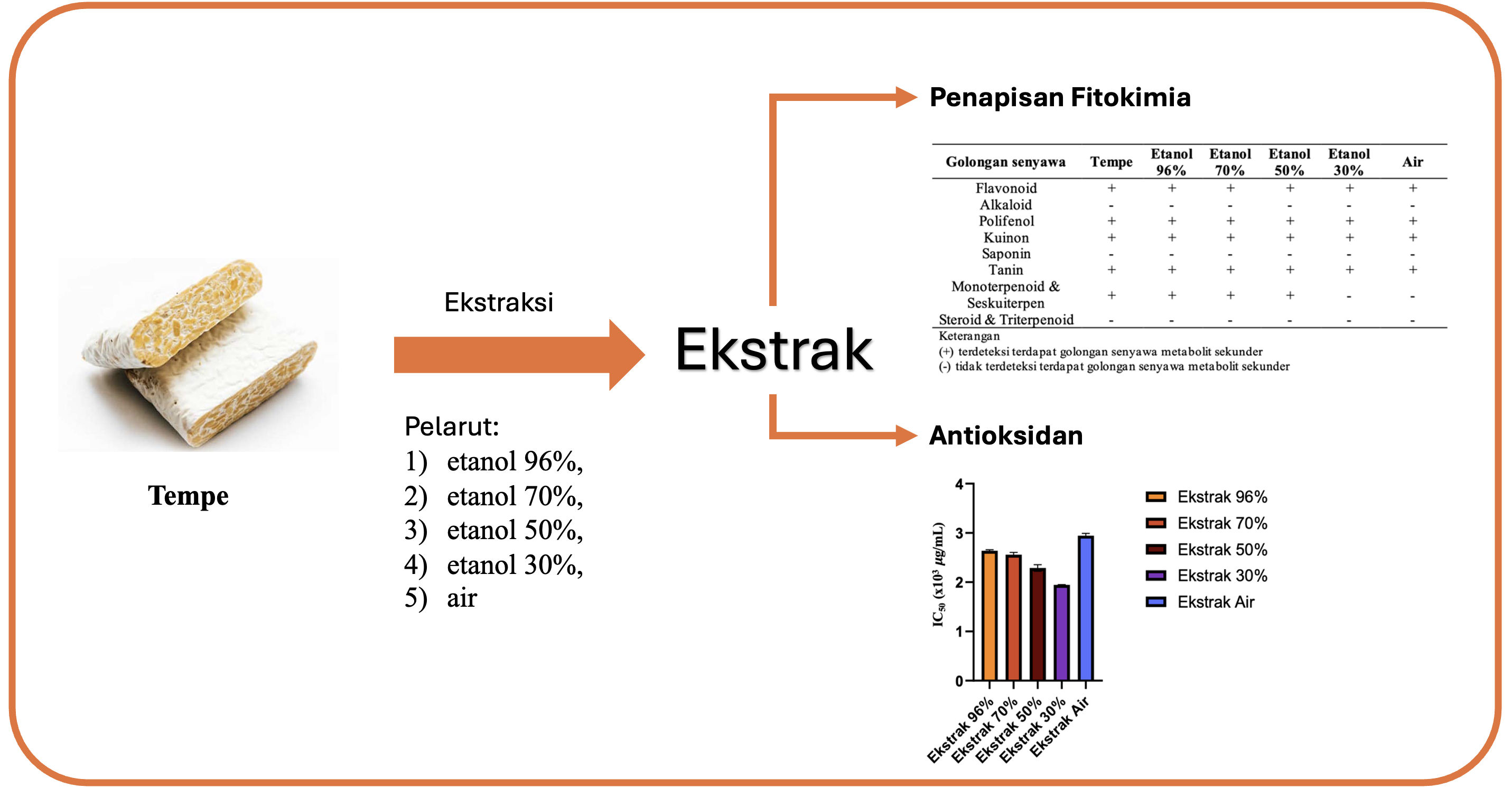The Effect of Ethanol-Water Solvent Variation on the Antioxidant Activity of Tempeh Extract
Pengaruh Variasi Pelarut Etanol-Air Terhadap Aktivitas Antioksidan Ekstrak Tempe
Abstract
Indonesia has a variety of processed food products made from beans, one of which is tempeh. A traditional Indonesian dish, tempeh is made from soybeans (Glycine max). The bioactive isoflavones contained in tempeh possess phenolic groups that contribute to its antioxidant properties. In addition to isoflavones, compounds such as superoxide dismutase and tocopherol also exhibit antioxidant activity. This study aimed to evaluate the antioxidant activity of tempeh extracts by varying the concentrations of ethanol in the solvent: 96% ethanol, 70% ethanol, 50% ethanol, 30% ethanol, and water. Extraction was performed using ultrasonic-assisted extraction, and antioxidant activity was assessed using the DPPH method, both qualitatively (via dynamolysis and TLC) and quantitatively (using UV-Visible spectrophotometry). The results from the qualitative antioxidant tests using dynamolysis and TLC showed potential antioxidant activity, evidenced by a yellow color change after the sample was sprayed with 0.2% DPPH reagent. Quantitative UV-Visible spectrophotometric testing with quercetin as a standard yielded an IC50 value of 2.86 µg/mL. The IC50results for the extracts in decreasing order of ethanol concentration were as follows: 96% ethanol extract (2638.49 µg/mL), 70% ethanol extract (2559.49 µg/mL), 50% ethanol extract (2288.65 µg/mL), 30% ethanol extract (1945.54 µg/mL), and water extract (2946.45 µg/mL). The highest antioxidant activity was observed in the 30% ethanol tempeh extract, while the lowest antioxidant activity was found in the water extract. These findings indicate that tempeh extracts exhibit antioxidant activity, which varies depending on the ethanol-water solvent composition.






















